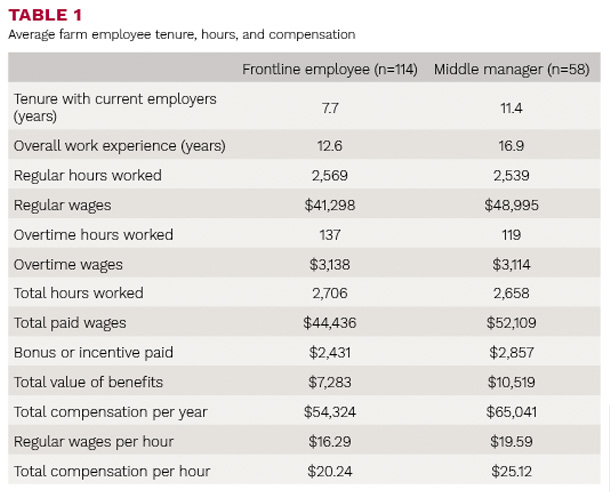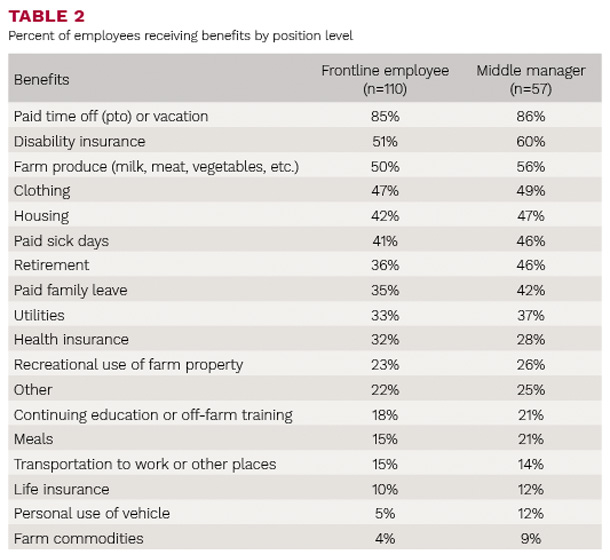Companies across the economy, and in all industries, are struggling to find enough people, from manufacturers to restaurants to retail. The transportation industry is particularly hard hit. Truck drivers are in extremely short supply and seaports can’t move product through efficiently. These factors have an impact on dairy supply chains, pricing, and export sales. For employees, including farm employees, these labor shortages create opportunities to find new jobs, and often higher pay, in the process.
Of course, we know that pay is not the only factor when employees decide where to work. Employees are human beings with a variety of needs that can be met through work. Location and flexible hours are critical to some employees so they can coordinate their work hours with family time or to meet childcare responsibilities. Some employees just love to work in farming with animals, crops, the outdoors, and the people in agriculture. Others have a particular connection of loyalty and commitment to their employer, a family bond that exists whether they are related or not.
Farm employers can, and should, use all of these non-pay factors to retain and attract employees but they should also keep employee pay competitive with the labor market. Why? First, we all need money to meet the essentials of life, and the cost of living goes up every year. But it’s more than that. Compensation, the combination of pay and other valuable benefits, is connected with employees’ sense of value and fairness. If an employee discovers that she is compensated significantly less than peers who do similar work for the same or other employers, then she is likely to perceive this as an injustice and a sign of underappreciation. You don’t need to offer the highest compensation but you need to be “in the ballpark” or within a reasonable range of similar employment opportunities.
To help farm employers obtain accurate information about employee compensation, Cornell Agricultural Workforce Development conducted a benchmark survey of farm employee compensation. Farms of all types and locations could participate in the online survey but the majority responded from New York and Pennsylvania. We conducted the benchmark from February to April 2021, and asked employers to anonymously share detailed information about one or more employees’ 2020 work, position, responsibility, experience, and compensation at various levels in their organizations. The strength of this approach is that we got detailed compensation and work information about real, individual employees. Most other surveys gather generic information about how farms compensate generic groups of employees.
Our final dataset included 218 employees, including frontline, middle manager, and senior manager representation. All farm sectors are included in the study with slightly over half working in dairy farms, 20 percent in fruit, 12 percent in vegetable, and the balance in all other sectors. It is helpful to compare among industry sectors because talented employees certainly have opportunities to move among dairy, fruit, or vegetable positions, or even to work in another industry. We collect data about all types of employees, but most farmers are interested in how competitive they are with full-time, permanent (not seasonal) positions. All information reported in this article applies to full-time, permanent employees.
Table 1 presents the average 2020 tenure, hours, and compensation for frontline employees and middle managers in our study.

The frontline employees in our study had close to eight years of tenure with their employers and over 12 years of experience. For the regular hours they worked, they earned on average $16.29. Some employees were paid overtime. When that was included total paid wages came to $44,436. Total compensation includes the value of bonus or incentive pay and benefits, giving our average frontline employee $54,324 for the year, or $20.24 in total compensation per hour worked.
Bonus or incentive pay averaged $2,431 in 2020 for frontline employees, which seemed unusually high, about $1,000 more than a similar study we conducted in 2017. The year 2020 included many COVID-19 relief programs from the federal government. Discussions with farm employers revealed that some of these funds were frequently passed along to employees in the form of one-time bonuses.
Middle managers earned about $25.12 per hour in total compensation - $19.59 of that was regular wages and the remainder came from overtime pay, bonus, incentives, and benefits. Regular wages were $3.30 per hour higher for middle managers versus frontline employees. Bonus or incentives represented about four percent of both frontline and middle manager total compensation. Benefits were a little more important for middle manager compensation, representing about 16 percent of total compensation compared to 13 percent for frontline employees.
Table 2 shows what portion of the employees in the study received a variety of different work-related benefits.

Overall, the benefit profile is similar between frontline employees and middle managers. Paid time off, disability insurance, and farm produce were all received by more than half of the employees. Work clothing and housing were quite common with nearly half of employees receiving them.
Clearly, farm wages are well above regulatory minimum wage, even in high minimum wage states like New York. USDA’s Economic Research Service measures hourly farm wages (not benefits) twice per year. For 2020, they reported that farm wages were about 60 percent of the value of non-farm wages, up from about 50 percent in 1990. Non-farm wages, however, included both urban and rural employment. Farm wages were likely much more competitive in the rural communities where most farm jobs were found. Nevertheless, farm wages still lag behind non farm wages, and farm employers, especially in hot labor markets, must be conscious of the need to compete with other industries for employee talent.
Farm employers should consider these average hours, wages, and benefits and how your employee compensation stacks up in comparison. Keep in mind that these are averages. There were many employees in our study with compensation both higher and lower than the amounts reported here. High-performing employees are much in demand at other farms and in other industries so you may need to increase compensation to retain them in your team. ![]()
Richard Stup is an agricultural workforce specialist at Cornell University. Email Richard Stup.
Links
This article appeared in PRO-DAIRY’s The Manager in November 2021. To learn more about Cornell CALS PRO-DAIRY program, visit PRO-DAIRY Cornell CALS.








